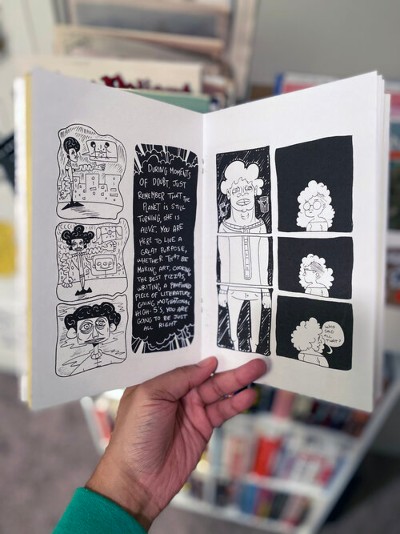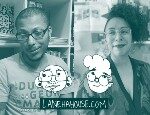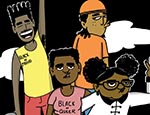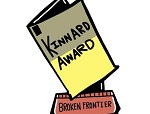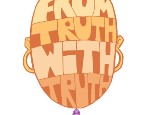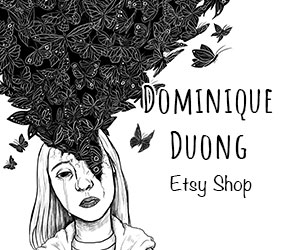Last November at Broken Frontier we exclusively announced the formation of Laneha House, Lawrence Lindell and Breena Nuñez’s micropublishing venture showcasing their own comics and also the publishing home of The BAYlies, an anthology featuring work by “Bay Area Cartoonists of Color and Queer Cartoonists.” What drew me to their output wasn’t just the platform they were providing for marginalised voices but also the DIY culture vibe of their minicomics and zines. It’s something I have particularly missed over the last year through these comics event-less months without the opportunity to browse festival tables and chat with grassroots creators.
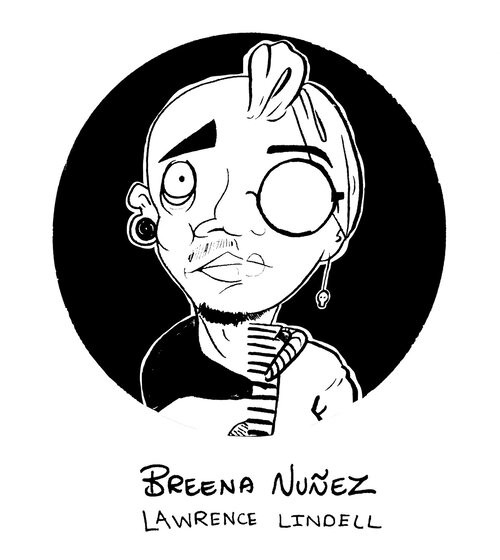
One re-presents a 2017 photocopied minicomic. It seems a perfect place to start in covering Laneha House’s output in more detail given that it places work by Lindell and Nuñez side by side in an intriguingly complementary fashion (those wanting to take a look at previous BF reviews of Lawrence Lindell’s comics are also directed to my review of From Truth with Truth here last year). One adopts a very different sequential structure in terms of its storytelling, with every page presenting a short continuing strip by each artist that are read top to bottom rather than panel to panel in a traditional sense.
These are, as it hardly needs saying, the most difficult times to be living through. But it’s in comics like One with their message of hopefulness despite the odds that we can find a much needed level of positivity to latch onto and embrace. Both Lindell and Nuñez’s offerings here are experimental in their construction and their approach to their subject matter, with Lindell’s in particular communicating in ways that are absolutely unique to comics as a medium.
Lindell’s half of the comic allows readers to interpret and find their own truths in an exploration of love and interpersonal relationships between characters that intricately uses image-filled speech balloons to convey its cast’s thoughts. Speech balloons exist within speech balloons, imagery replaces dialogue within them as a means of conveying feelings and thoughts, and panel shapes and sequences become an integral part of the strip’s emotional core. Lindell uses the pure language of comics here to encourage us to interact with the page almost on an instinctual rather than intellectual level, and it’s all the more effective for it.
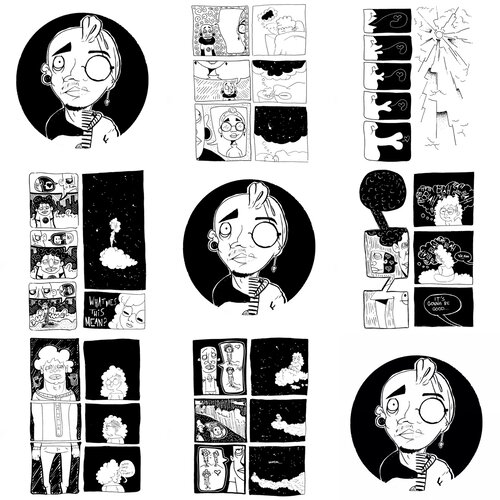
Nuñez gives us something approaching a contemporary Little Nemo in Slumberland for a very post-Millennial world. Dreaming self-doubt and cynicism is transformed into optimistic self-acceptance in a meeting between outer and inner self. There are some extremely clever uses of lettering early on to underline emotional state and one key single image on page 11 that should be on t-shirts everywhere the next time we are all able to be at small press fairs again! While some sequences are necessarily text-heavy for effect, Nuñez also has a deft understanding of when to eschew words completely and allow pure visual storytelling to do the talking.
This is a short 12-page piece but it’s an undeniably uplifting one. We’ll be returning to the output of Laneha Press at BF once again in the not too distant future but in the meantime I’d urge you to check out their site here for more on their output.
Review by Andy Oliver





